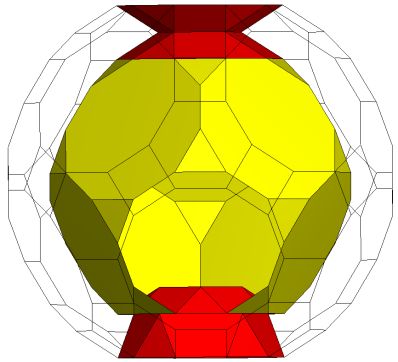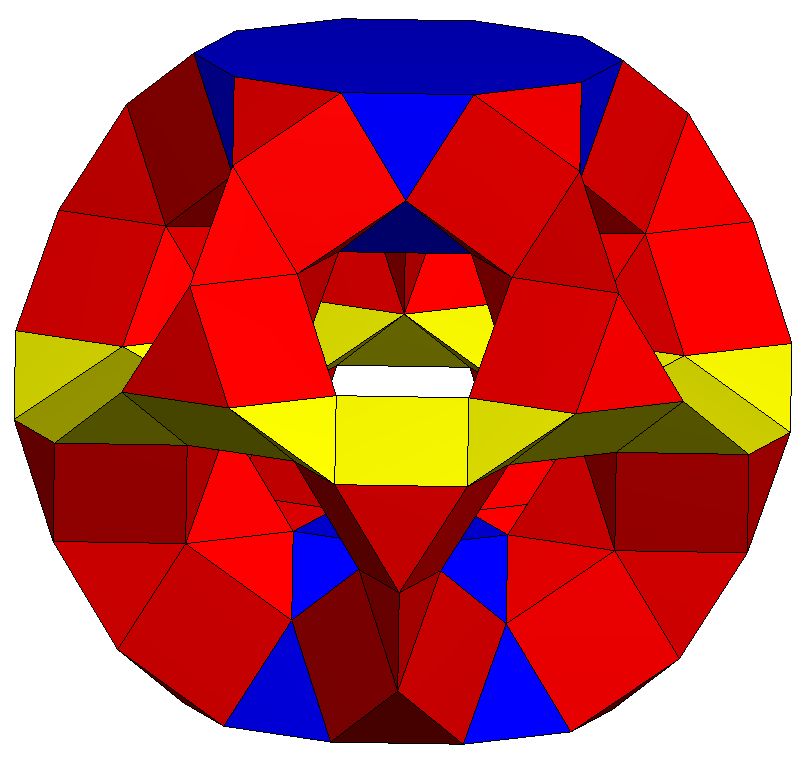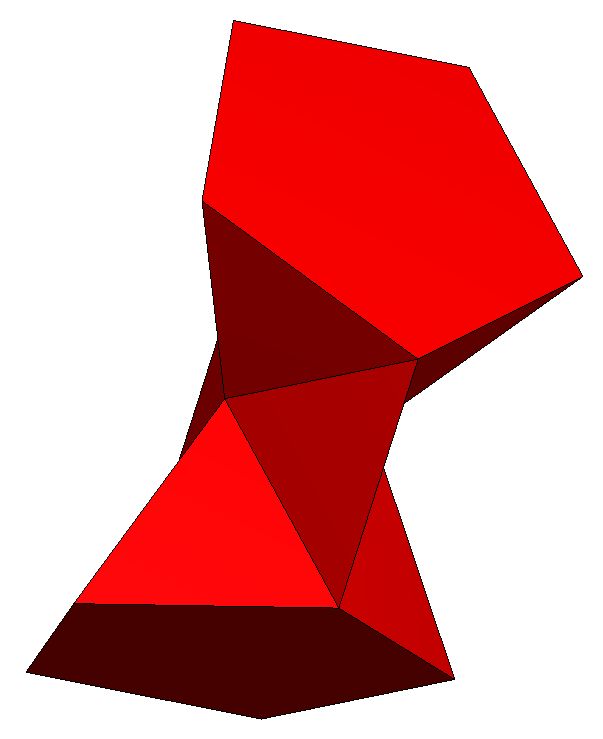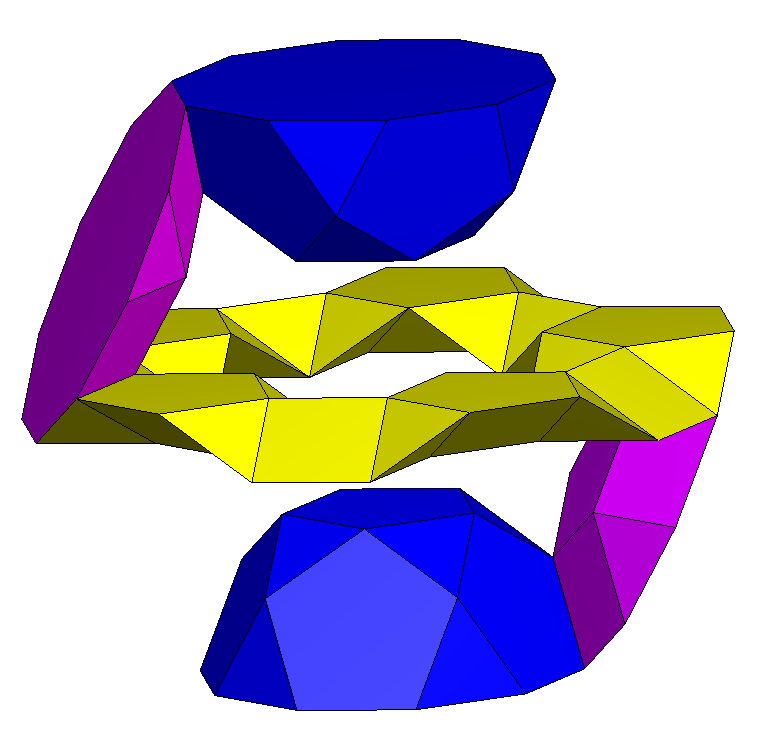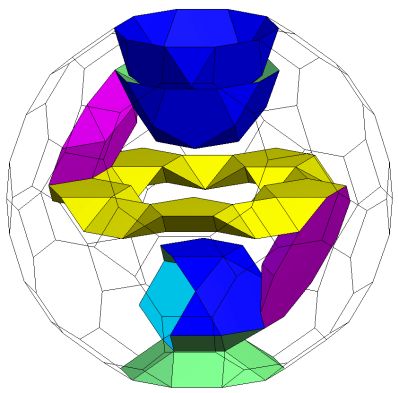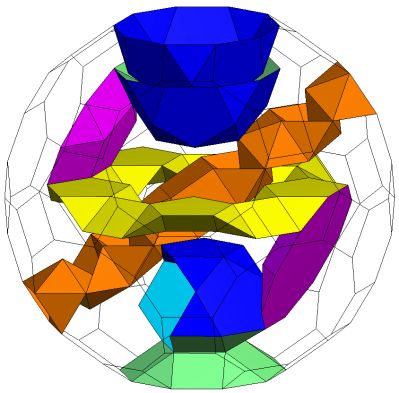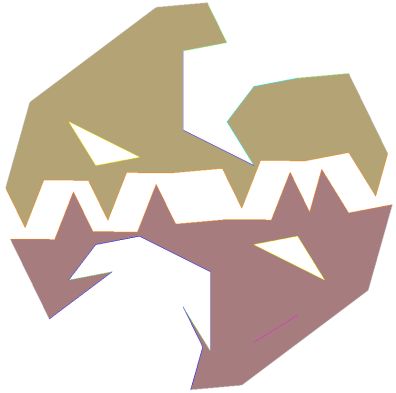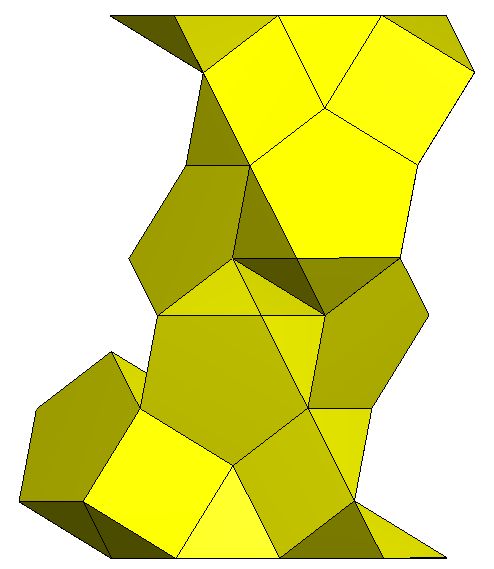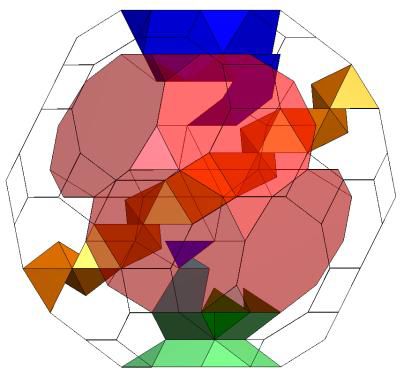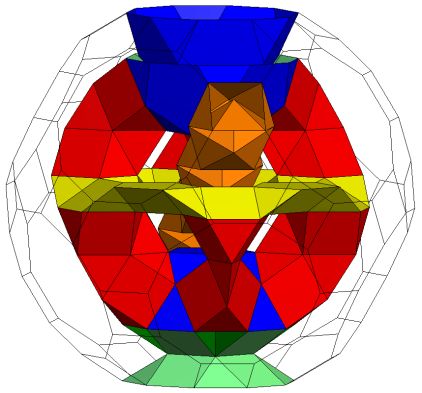The solution to this was inspired by the discovery of the rather simple toroid K5 / T5Q5S5Q5 which is implied in Stewart as the basis of the Zulu chair discussion but is not explicitly described.
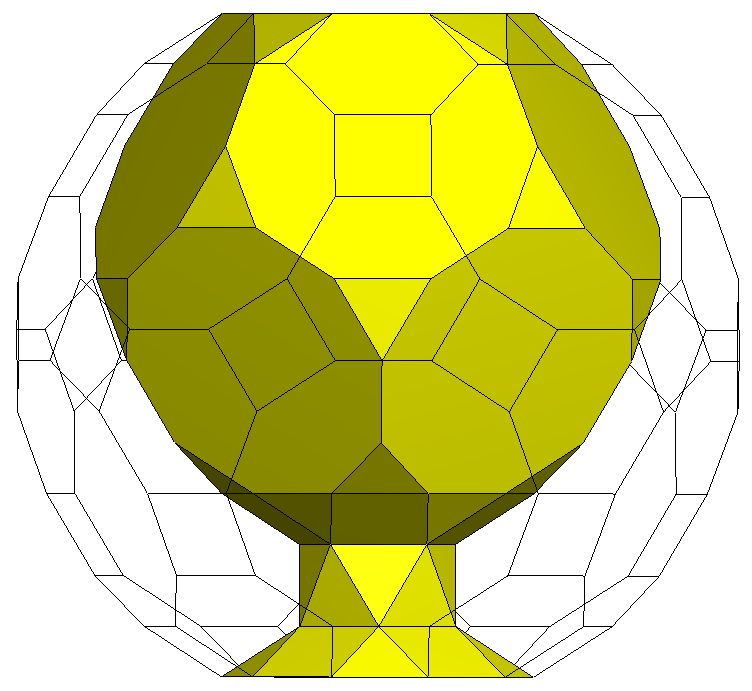 K5 / T5Q5S5Q5. Genus p=1 |
The solution involves:
(i) moving the T5 to be nearly central to the containing K5
(ii) replacing the T5 with a 'stripped down' version of the tunnel from T5 / 12Q5S5(D5) leaving a relatively open P'' through which the rod can be passed and
(iii) resolving minor interference issues.
Part (i) is achieved by replacing the S5 with the combination R5Q5A and putting it at the other side of the T5 to form K5 /
